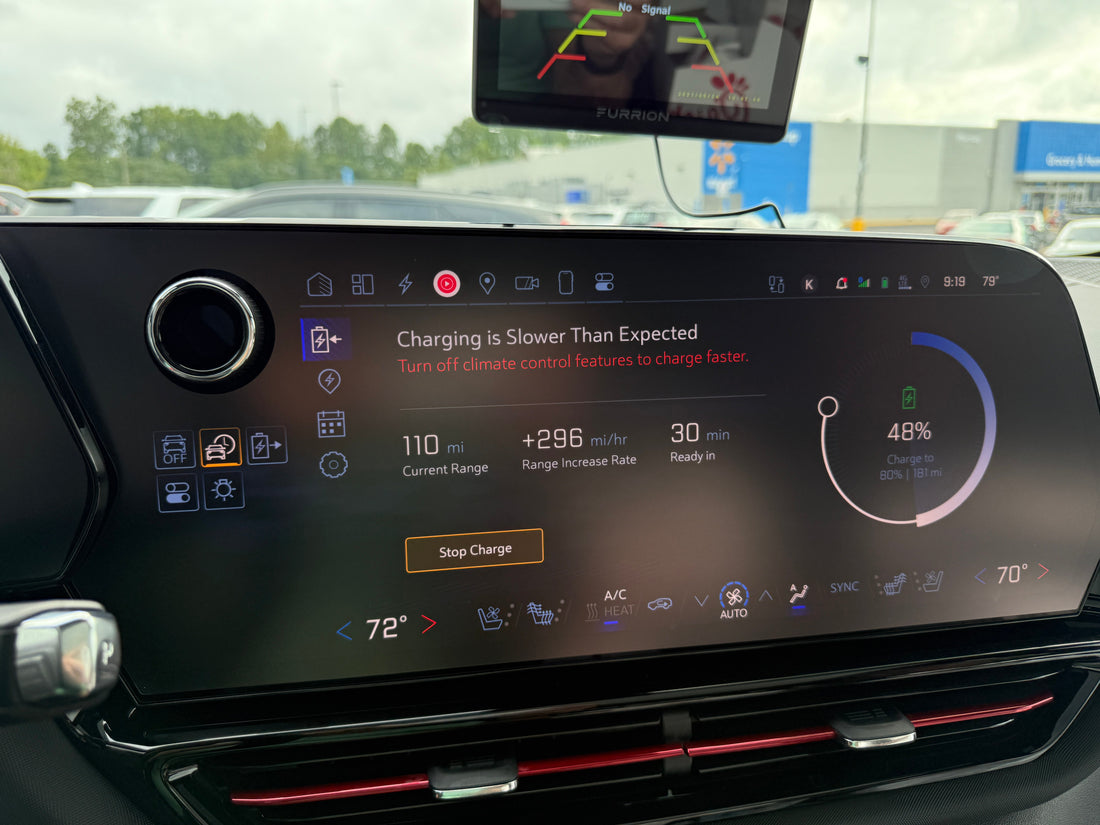
Why Your Chevy Silverado EV, Blazer EV, or BrightDrop Might Be Suffering Reduced Power—Here’s What’s Going On
Share
If you drive a 2024–2026 Chevy Silverado EV, Chevy Blazer EV, or one of BrightDrop’s all-electric delivery vans, you may have noticed unusual warnings like:
- “Reduced Acceleration”
- “Drive with Care”
- “Propulsion Power Reduced Due to Temperature”
- "Charging Is Slower Than Expected"
These messages can appear without registering any diagnostic trouble codes. Naturally, such alerts can be alarming. But according to General Motors, this isn’t a defect—it’s purposeful behavior designed to protect your vehicle’s battery system.
What’s Behind Reduced Power Mode?
1. Temperature Sensitivity of the Battery
GM intentionally limits vehicle performance under certain conditions to safeguard high-voltage battery health. These limitations are temperature-dependent:
- At moderate temperatures (around 68 °F / 20 °C), power restriction typically kicks in when your state of charge (SOC) falls to about 5%–10%.
- In colder conditions (around 14 °F / –10 °C), similar performance limits may show up even when SOC is higher, such as 45% or more.
- At extreme cold (around –13 °F / –25 °C), GM may impose power limits regardless of how much charge remains.
Bottom line: The system’s priority here is thermal and battery protection—not necessarily driving range.
2. What Happens in Hot Weather
On a hot day, even with a battery fully charged, your Silverado EV or Blazer EV might still enter reduced power mode. That’s because:
- The system diverts energy to battery cooling.
- GM advises drivers to minimize cabin cooling—like excessive air conditioning—to reduce the strain on electrical cooling systems.
Understanding the Warnings as the Charge Drops
Once your battery dips below 20% SOC, the vehicle will escalate its warning levels to help you avoid running out of power:
- Charge Vehicle Soon: At around 6–12% SOC.
- Charge Vehicle Now: When SOC dips below 6%.
- Vehicle Out of Energy: At 0% charge.
These staged warnings are intentional and are part of a structured protocol detailed in GM Bulletin 25-NA-222.
Slower Charging In Hot Weather

In hot temperatures its also possible to see the message above even if your battery was preconditioned prior to arriving at the fast charger. This is because in hot weather the battery needs additional cooling when fast charging. If your sitting inside the cabin with the AC running, the vehicle is not able to divert enough cooling to the battery to charge at full speed and so it slows the charge rate to compensate. To resolve this, its recommended to park the vehicle and turn it off while fast charging so that 100% of the cooling capacity can be sent to the battery and it is able to recharge as fast as possible.
Cold Weather Strategy for Owners
When temperatures drop, GM recommends keeping the vehicle plugged in after charging. This helps the car maintain optimal battery temperature, avoiding unnecessary power limitations.
So, Should You Be Worried?
In most cases, no. Here's how to interpret these warnings properly:
- These messages do not automatically mean there is a fault or malfunction.
- They represent built-in safeguards to protect the battery from damage and to preserve its longevity.
- Still, if you notice persistent alerts that don’t align with temperature or charge level situations, a dealer consultation could be worthwhile.
|
Scenario |
What Happens |
Reason |
|
Moderate Temp, Low SOC 🪫 |
Power limited at ~5–10% SOC |
Protects battery from low SOC stress |
|
Cold Conditions ❄️ |
Restrictions even at higher SOC (~45%) |
Manages battery performance in cold |
|
Extreme Cold 🧊 |
Power limited regardless of charge |
Prevents battery strain at very low temperatures |
|
Hot Conditions + Full Charge 🥵 |
Reduced power due to energy going to cooling |
Balances vehicle and battery cooling needs |
|
Low SOC Thresholds 🪫 |
Sequential warnings escalate |
Guides driver to avoid being stranded due to a dead battery |
Final Thoughts
Experiencing a warning message like “Propulsion Power Reduced Due to Temperature” can feel disconcerting. But with the knowledge that it’s GM’s way of protecting your EV’s battery system—rather than a sign of failure—you can better understand why you might have less available power or slowed charging at DC fast charging stations.
Keep an eye on ambient temperatures, adapt cooling behavior in hot weather by parking and leaving the vehicle (so that the cabin doesn't have to be cooled), and stay plugged in when it’s cold. These small steps can help your Silverado EV, Blazer EV, or other EV run smoothly.
